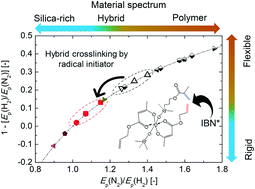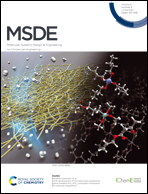Facile development of microstructure-engineered, ligand-chelated SiO2–ZrO2 composite membranes for molecular separations†
Abstract
In this study an easy template was devised for the fabrication and microstructural control of ligand-chelated, silica–zirconia-based composite membranes with a thickness of less than 400 nm. Hybrid materials with crosslinking between the organic moieties were successfully fabricated via the sol–gel co-condensation of 3-(trimethoxysilyl)propyl methacrylate and zirconium(IV) butoxide chelated via acetylacetone and allyl acetoacetate ligands using an azobisisobutyronitrile radical initiator as a crosslinking agent. Characterization of the films and gels via FTIR, XRD and thermogravimetry indicated that both the polymerization and hybridization of the networks was achieved. Gas permeation experiments showed that the organic crosslink-derived membranes possess molecular sieving properties (H2 permeance: ≈10−7 mol m−2 s−1 Pa−1; H2/N2 selectivity: ≈20–30) that are superior to those of non-crosslink-derived membranes (H2 permeance: ≈10−7 mol m−2 s−1 Pa−1; H2/N2 selectivity: ≈7–11). Quantitative analysis of the microstructures of the membranes based on the permeation behaviors of H2 and N2 revealed that organic crosslinking led to significant control of the microstructural characteristics of the membranes.



 Please wait while we load your content...
Please wait while we load your content...